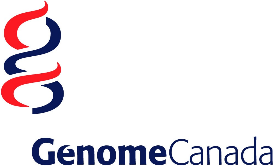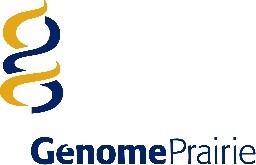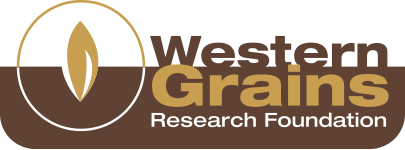Research Papers
Canadian lentil market, supply chain, and lentil suppliers and processors
By Simona Lubieniechi, Darnell Holt, and Peter WB Phillips, University of Saskatchewan.
Saskatchewan is the primary producer of lentils in Canada, accounting for 90% of Canadian production, and is also a major global lentil contributor. Saskatchewan's exponential lentil production is attributed to trials and research for pulse research and development as well as to Saskatchewan's favorable climatic conditions for lentil production compared to most parts of Canada. Currently, there is a gap between identifying the major trends within the planting, processing, and manufacturing lentil industry and consumer behavior and consumption.
Research in the public eye: Engaged academic research and the 'right to know'
By Peter WB Phillips, Distinguished Professor Emeritus, JSGS, University of Saskatchewan.
If you Google my name with the phrase ‘Monsanto’, you will find a series of allegations that my scholarly work is unduly influenced by corporations and that I have engaged secretly in promoting genetically modified organisms (GMOs). It is not and I have not. My experience offers an insight into the challenges of scholars working on matters of public interest.
There must be a better way of distributing grant funds
By Peter WB Phillips, Distinguished Professor Emeritus, JSGS, University of Saskatchewan.
Like most academics in Canada, I have been actively applying for grants over the past number of decades. A while ago I did a stocktaking of the benefits and costs of all the effort I have put into getting external peer reviewed money. I knew I had been successful, generating enough resources to do everything I wanted and enough to share with other colleagues and students. So, I have no complaints about the outcomes. Rather, I was surprised that many of the competitions I engaged with had relatively poor returns, both for my personal effort and quite possibly for the group of scholars competing against me in those competitions.
Is democracy the cause of or solution to climate change?
By Peter WB Phillips, Distinguished Professor, JSGS, University of Saskatchewan.
People are becoming impatient with their governments. Dissatisfaction with government has a long history, but beginning in 2019 frustrations started to boil over due to the sense of a pending climate crisis. The issue is coming more into focus with the Intergovernmental Panel on Climate Change (IPCC) AR6 Synthesis Report: Climate Change 2023, which summarizes five years of reports on global temperature rises, fossil fuel emissions and climate impacts, concluding "There is a rapidly closing window of opportunity to secure a liveable and sustainable future for all."
Uneven Pulse Adoption in SK and AB: Interview Findings: Professional Agronomists and Certified Seed Growers
By: Simona Lubieniechi, Andrew Phillips, Aaron Hertes, Peter WB Phillips
This research focus was to identify the various factors that influence producer decision-making processes and that contribute to an effective communication and knowledge exchange, with the aim of optimizing greater farmer adoption of new lentil varieties. Further, this study also focused on revealing the reasons behind the uneven pulse adoption in Western Canada, particularly in Saskatchewan (SK) and Alberta (AB).
Put down the pen; pick up the tablet: A Case Study on the Adoption of a Digital Data Collection System for Plant Breeding
BY: SIMONA LUBIENIECHI, CRYSTAL CHAN, KIRSTIN BETT, AARON HERTES, PHIL PHILLIPS AND PETER W.B. PHILLIPS (2023)
With the rise in interest in curating, linking and using big data for plant breeding, the big question is whether users will come if systems are built. This paper explores the uptake and use of a digital data collection template and of KnowPulse, a platform website hosted at the University of Saskatchewan. KnowPulse was designed to provide a one-stop site for genomics and phenomics data and a range of relevant tools for breeders of pulse crops, especially lentils. The paper highlights a host of variables that have limited the full uptake and use of this innovative tool.
Studies in Research Design: Investigating the Genome Canada experience
BY: PETER W.B. PHILLIPS (2023)
Over the past 15 years, Dr. Peter Phillips has had a number of students undertake research that explores aspects of the design, management and impact of Genome Canada on the bioscience research system. This collection provides the key findings in a single package. The students used an innovative mix of theories and methods to test the design features of Genome Canada.
Dr. Phillips would like to acknowledge and thank all the researchers who contributed to this work, including Puja Sharma, Ebrahim Hassanpour, Lucy Zhang, Haizhen Mou, Eric Warren, Andrew Phillips, Bethany Penn, Bill Boland, Aaron Hertes, Yvonne Nyake and Simbo Olobobokun.
He would also like to acknowledge and thank the funding partners, including SSHRC, Genome Canada, Genome Prairie and the Government of Saskatchewan
Democratic Engagement and Public Policy: From Conceptualization to Implementation
BY: PETER W.B. PHILLIPS, YVONNE NYAKE, AND LOKPRIY SHRMA (2023)
This study assesses the fit between a range of democratic engagement processes focused on science, technology and innovation policy and the policy agenda. The study identified 82 studies from 1992 to 2014, coded the processes both using the International Association of Public Participation (IAP2) spectrum, which measures the degree of involvement of publics using specific criteria, and according to which of the five stages of the policy cycle (agenda setting, design/policy formulation, decision making, implementation and evaluation) there were directed towards. The research finds that public engagement in advanced industrial democracies is diverse, involving various forms of communication and discourse, including but not limited to informing, consulting, involving, collaborating, and empowering between government, the public and stakeholders at various stages in the policy cycle. The analysis establishes that the level of public engagement is highest during the agenda setting, design and decision-making stages, relatively low during the implementation and evaluation stages of the policy-making cycle and that there is a notable lack of empowerment in all stages of the public engagement process in the policymaking.
A Meta-Analysis of GM Crops Regulatory Approval Costs
BY: PETER W.B. PHILLIPS AND ALPHONSO WILLIAMS (2023)
Concerns over the effects on human and animal health from the consumption of genetically modified food crops, as well as about potential impacts on the wider environment, have divided public opinion over the merits of using the technology. One consequence is that governments have traditionally been very cautious about approving GM crops for cultivation and consumption. A concomitant effect is that the costs involved (and time spent) in achieving regulatory approval for the introduction of a GM crop have risen. This study examines the evidence on the absolute and relative costs of gaining regulatory compliance, first by surveying the literature to gain some insights into the scale and range of costs. The data reveals significant differences which are then unpacked using meta-analysis. The analysis reveals that product attributes, market context and technical aspects of measurement all have significant effects on the costs of regulatory approval.
Willingness to Pay for Wastewater Treatment Plants is Sensitive to Anchoring
BY: ERIN ANHORN, ERIN HILLIS, CLARISSE UWAMAHORO, AND REED LANGAN (2022)
Wastewater treatment plant upgrades that improve the capacity to deal with high rainfall levels are necessary to protect the health and safety of citizens, however, upgrades are expensive. Previous research indicates that people's willingness to pay (WTP) for tax increases is sensitive to anchoring—citizens use the estimated cost of the project as a heuristic to judge the appropriate amount of taxation. This study uses an online survey to investigate the effects of anchoring and environmental attitudes on an individual’s WTP for wastewater treatment plant upgrades. First, we find that people’s WTP for wastewater treatment plant upgrades is sensitive to anchoring. Second, we show that people who indicate apathy towards the protection of the environment are most sensitive to anchoring. We conclude our study with a discussion on policy and research implications—leveraging the anchoring effect by suggesting a higher quote is strategic for enhancing transparency and maximizing public support for proposed municipal tax increases, particularly amongst those with apathy towards environmental issues.
Evaluating Program Fit: A case study of Genome Canada programming, 2000-11
BY: LUCY ZHANG, HAIZHEN MOU AND PETER W.B. PHILLIPS (2022)
This paper assesses the fit between project allocations and the strategic objectives of Genome Canada (GC), a major research funder in Canada. A regression model was used to test the relationship between the objectives of the organization (using data available to decision makers) and the share of funds allocated to specific projects, both in the total pool of investments and open competitions. The overall fit between 2001 and 2011 was about 35%, with the impact factor of the principal investigator being the most significant driver. The fit decreased for the open competitions alone, suggesting directed investments more strongly fit organziational goals.
Managing Large-Scale Science Research Programs: The Genome Canada Experience 2000-2010
BY: PETER W.B. PHILLIPS AND ERIC WARREN (2022)
In September 2000, Genome Canada was created as an arms-length not-for-profit Crown Corporation mandated to fund large-scale science projects and their accompanying science and technology platforms. Given its goal to leverage private sector R&D, Genome Canada provided up to half of the operating capital, on the condition that other eligible partners contribute the remaining funds. In the first decade, Genome Canada conducted four major competitions. In each competition, scientific leads prepared and submitted proposals for large-scale projects. Genome Canada then conducted a lengthy review process, evaluating the merit with respect to the scientific and commercial potential, managerial competence, financial capacity, and socio-economic impact. Those judged, through a mixture of in-house and external peer review, to have high potential received Genome Canada funding. The criteria for merit and potential changed over time, or are at least was managed in different ways. The structure of the contests themselves also changed, in some ways quite dramatically. This paper examines Genome Canada’s first decade of managerial practices by looking closely at the structure and substance of the major funding competitions.
Case Study: AGT Food and Ingredients Ltd: Industrial Development and Collective Action in the Canadian Pulse Industry
BY: PETER WB PHILLIPS AND STEPHEN FRANSOO (2021)
The United Nations declared 2016 the year of the pulse, which offers an excellent opportunity to look back at western Canada’s progress in developing its pulse industry. Starting with negligible production as recently as 1980, the industry now produces 65% of world lentil exports and 55% of world pea exports. Along the way, the University of Saskatchewan Crop Development Center (CDC) in partnership with the Saskatchewan Pulse Crop Development Board (operating as Saskatchewan Pulse Growers or SPG), the preeminent industrial lobby group for research and market development in Canada, have created a unique public-private-producer partnership (aka P4) that has become a powerhouse of global pulse innovation. Along the way, AGT Food and Ingredients Ltd. from Regina emerged from a small, family-owned trading venture and developed into a publicly traded, vertically integrated company that grossed over $1.7 billion trading pulses globally in 2015. Impressive as this story is, it was all done under the intellectual property regime provided by the International Union for the Protection of New Varieties of Plants (UPOV 78), which provided only relatively modest protection for plant breeders’ rights (PBRs) for new varieties. Since Canada ratified the 1991 UPOV Convention in July 2015, plant breeders now have the capacity to use either PBRs or whole plant patents and to apply end-point royalties, which some believe may incentivize new and different private breeding efforts. Some suggest this may significantly change the trajectory of the industry, accelerating movement toward niche breeding and away from commodity breeding. AGT, possibly in collaboration with the SPG-CDC breeding partnership, is likely but not guaranteed to be at the centre to this new future. This case reviews the history of pulse development and explores the potential influence of the new IP regime on the trajectory of AGT and the industry.
Governance of International Networks: Understanding Access and Benefits Sharing (ABS) of Knowledge among International Plant Genetic Resource Institutions
BY: PETER WB PHILLIPS AND CAMILLE D RYAN (2022)
Governing in the modern times has become more complicated and complex, with an array of new governing structures encompassing the globe. Discrete institutions are increasingly intertwined and embedded in governing networks at sub-national, state and international levels. This paper investigates this new reality and uses it to examine the international governing system for plant genetics and genomic resources. Over the last century, issues have surfaced with technological progress and innovations that add complexity in the governing challenge, such as research management, intellectual property ownership, risk regulation and international trade in knowledge-intensive products. This paper explicitly examines one of the foundational issues of global knowledge management in the area of biotechnology—policies, practices and structures to support access and benefit-sharing (ABS) related to traditional knowledge (TK) and capacity-building in indigenous communities and developing countries. This paper uses social network analysis to investigate the complicated and complex interactions among a network of 108 international institutions and programs involved in ABS and TK. Using multiple layers of social network analysis, the structures and underlying meanings of the relationships in the governing network are studied and investigated for their structure, effectiveness and resiliency.
AGILE – Lentil Growers Survey Results
BY: SIMONA LUBIENIECHI AND PETER WB PHILLIPS (2022)
This report provides a summary of the results from the AGILE Lentil Growers Survey, which was focused on investigating how lentil farmers make decisions with regards to lentils cultivation. The purpose of the study was to determine whether social perceptions influence individual choices of existing and new lentil varieties in the crop rotation.
This research was conducted as part of the ‘Application of Genomics to Innovation in the Lentil Economy (AGILE)' project funded by Genome Canada and managed by Genome Prairie. We are grateful for the matching financial support from the Saskatchewan Pulse Growers, Western Grains Research Foundation, the Government of Saskatchewan, and the University of Saskatchewan. We acknowledge the support from our international partners: University of Basilicata (UNIBAS) in Italy; Institute for Sustainable Agriculture (IAS) in Spain; Center for Agriculture Research in the Dry Areas (ICARDA) in Morocco, India and Bangladesh; Local Initiatives for Biodiversity, Research and Development (LI-BIRD) in Nepal; and United States Department of Agriculture (USDA CRIS Project 5348-21000-017-00D) in the USA.
Citizen Science in the Digital Age: Connecting ‘Unapplied capacities’ with ‘Unmet Needs’
BY: JACK FOTHERINGHAM, RESEARCH ASSISTANT; AND GRAEME JOBE, MPP CANDIDATE (2021)
Citizen Science (CS) projects are playing an increasingly important role in both the advancement of scientific knowledge and in community engagement for scientific research organizations. With the advent of Web 2.0—and particularly since the ubiquitous consumer adoption of smartphone technology—the past 25 years have seen a great increase in the number of citizen science projects, with the majority of CS projects being web-based and globally accessible. Beyond accessibility for participation, the Internet has provided platforms—most notably Zooniverse—that make it easy for those who lack the capacity to produce or analyze large datasets to achieve their goals through volunteer participation. In the context of CS, digital technology has been used to overcome financial, geographic, and temporal barriers to research. CS projects provide a way for the global community to participate in research that is specific to a local context, increasing local impact while strengthening global interconnectivity. Digital technology provides everyday people with a means to interface with scientific research, and to aid researchers in collecting and analyzing data in fields from ecology to astrology. All projects contribute to the actionable, analyzed open data as a public good producing an output that advances public and private research and enriches the knowledge economy.
This report provides an overview of characteristics of existing CS projects along with some suggestions as to how insights gleaned from their study can be utilized from a public policy perspective.
A Citizen Science-Driven Approach to Food Security in Sub-Saharan Africa
BY: JACK FOTHERINGHAM, RESARCH ASSISTANT; AND GRAEME JOBE, MPP CANDIDATE (2021)
Over the last decade, citizen science (CS) projects have increasingly garnered a reputation as an effective tool in scientific research for their efficiency and public engagement. In their recent work, Jobe and Fotheringham sought to understand the principles, dynamics, and incentives that allow CS projects to succeed in coordinating decentralized voluntary efforts toward a common objective. This paper builds upon previous work by Fotheringham (2016) and Fotheringham and Jobe (2017). The former conducted a taxonomy of extant CS projects and developed a categorization framework based on the mode through which participants engage in a diverse range of information gathering and analysis exercises; the latter then applied insights gleaned from this study of CS projects to the broader application of crowdsourcing in the digital economy, including the private sphere. These efforts (1) clarified the underlying principles that make CS effective as a mode of decentralized information collection and analysis then (2) considered their applicability beyond public-good activities (i.e., driving scientific knowledge) to the realm of private goods (i.e., value creation in the knowledge economy). Building further on these efforts, this paper seeks to further extrapolate this conceptual framework to a new context in the public sphere: addressing food security and agricultural development challenges facing Sub-Saharan Africa (SSA).
Digital Agriculture and Digital Mining Entrepreneurial Policy in Saskatchewan: Global Entrepreneurship Monitor Expert Survey Data for Policy Analysis
BY: BRIAN WIXTED AND AARON HERTES, MPP CANDIDATE (2021)
Digital entrepreneurship is becoming an important element of regional economic dynamism. However, it varies significantly between regions, even within a single country, and there are few good indicators. Even more vague than the levels and importance of actual business activity are notions of policy relevance, success, and competence.
In 2015 and again in 2016 a team at the Johnson Shoyama Graduate School (JSGS) of Public Policy at the University of Saskatchewan asked 36 experts to provide their opinions on the framework conditions for digital entrepreneurship in the Province of Saskatchewan. The 2015 survey focused on digital entrepreneurship in Saskatchewan’s agriculture cluster and the 2016 survey focused on the mining cluster. The collection methodology was in accordance with that used by the Global Entrepreneurship Monitor (GEM).
This paper summarizes the key findings and implications.
Environmental Scan of Common Practices in Genome Editing and CRISPR in Canadian Public Research Institutions
By: Peter W.B. Phillips and Diego Macall (2021)
More food of greater nutritional value needs to be produced with an ever-shrinking amount of non-renewable resources. We are all also aware that climate change is making this challenge even more daunting. However, there is now reason for genuine hope because sustained research in biology has yielded a set of genetic engineering techniques collectively known as “genome editing.” Among these techniques, one stands out for its immense versatility and the relative ease with which it can be used, namely Clustered Regularly Interspaced Short Palindromic Repeats (CRISPR). What is so novel about genome editing, is that it offers greater precision than precursor technologies such as transgenic modification (often shortened to GM).
This research was conducted as part of the ‘Enhancing the Value of Lentil Variation for Ecosystem Survival (EVOLVES)' project funded by Genome Canada and managed by Genome Prairie. We are grateful for the matching financial support from the Saskatchewan Pulse Growers, Western Grains Research Foundation, the Government of Saskatchewan, and the University of Saskatchewan. We also acknowledge support from BASF, AGT Foods, Global Institute for Food Security, Palacky University, and Polytechnical University of Marche.

Challenges and Potential Solutions to Improve Fertilizer Use Efficiency and Reduce Agricultural GHG Emissions
By: Lana Awada and Peter W.B. Phillips (2021)
The Canadian government in April 2021 announced C$200 million for 2021-23 to launch immediate, on-farm climate action under the Agricultural Climate Solutions program to target, among other things, projects accelerating greenhouse gas (GHG) emission reductions by improving nitrogen management. Recent work offers some insights into early priorities for those resources.
Importance of FAIR in the Bioscience Research World
By: Albert Ugochukwu and Peter W.B. Phillips (2021)
In recent years, the volume of data produced across disciplines, especially in bioscience research, globally has grown exponentially. Data science holds promise for advancement in innovative research that offers solution to food security challenges and underpins the importance of effective scientific data management. However, producing high quality data and making them openly available in the form that they are easily findable, accessible, interoperable and reusable (FAIR) has been a challenge and, therefore, requires practicing good data management and stewardship.
The Costs of Genome Editing Governance
By: Rim Lassoued, Stuart J. Smyth, Peter W.B. Phillips (2021)
The advent of genome editing tools to make targeted edits to plant DNA brought a revolution for research and crop improvement, but raised concerns regarding regulatory processes and public perceptions. Given that genome editing technologies can result in both non-transgenic and transgenic outcomes, the former are expected to be marketed as equivalent to conventional counterparts, whereas the latter as equivalent to genetically modified (GM) products.
Governance of Agricultural and Genomic Data
By: Peter W.B. Phillips (2021)
Big data, structured and unstructured, is generated from diverse sources, in volumes too large for traditional technologies to capture, manage, and process in a timely manner. This data can be a competitive advantage for firms that have identified means to extract value. These large datasets raise questions of ownership, privacy, accessibility, and sharing, among others.
Governance of Digital Sequence Information and Impacts for Access and Benefit Sharing
By: Stuart J. Smyth, Diego M. Macall, Peter W.B. Phillips, Jeremy de Beer (2019)
The decoupling of biological information from its material source has changed the global debate about access and benefit sharing (ABS) of genetic resources. What does the digitization of biological information mean for genetic resources of proven and potential value? What implications does DSI have for individuals and groups who have invested time and effort in augmenting and refining valuable characteristics in genetic resources? These are the types of questions that have emerged with the advent of digital sequence information (DSI). This paper explores the options for governments to continue advancing the goals of access and benefit sharing, when physical access to genetic resources is no longer needed because DSI is readily accessible. To do so, implications of DSI are explored through the lens of access to genetic resources for crop/plant breeding.
Do school physical activity policies and programs have a role in decreasing multiple screen time behaviours among youth?
By: Tarun Katapally, Rachel E. Laxer, Wei Qian, Scott T. Leatherdale (2017)
Screen time in youth has been associated with a wide range of poor health outcomes. Evidence indicates the need to develop physical activity (PA) school policies and programs that are aimed at decreasing youth screen time behaviours. This study aims to understand the association between PA policies and programs embedded into the functioning of 89 schools across two provinces in Canada and multiple screen time behaviours.
As part of the COMPASS Study, a total of 44,861 youth aged between 13 and 18 years and belonging to 89 schools in two Canadian provinces completed a validated questionnaire for health behaviours and outcomes data. PA policies and programs were measured using the School Policies and Practices Questionnaire, completed by the relevant school administrator. Participation in before-school, noon hour, or after-school intramural programs, participation in varsity sports, and access to indoor areas of PA during non-instructional time, was associated with significantly lower multiple screen time behaviours across both provinces. With exposure to multiple electronic and digital devices only predicted to increase among youth in the future, there is a need to conceptualize and integrate school-based screen time reducing PA policies and programs into the regular functioning of the schools.
Evaluating climate justice – attitudes and opinions of individual stakeholders in the United Nation Framework Climate Change Convention Conference of the Parties
By: Margot Hurlbert (2011)
This article evaluates the concept of climate justice in the context of global agreements to cut greenhouse gas (GHG) emissions and mitigate climate change under the institutional direction of the United Nations Framework Climate Change Convention Conference of the Parties. Results of this study is based on an analysis of the opinions and attitudes of stakeholders involved in climate change negotiations at the Copenhagen conference with respect to climate justice.
It begins by demonstrating the value of an enhanced, comprehensive conception of climate justice which includes legal, distributive, participatory and ethical justice. It adopts this robust conception of climate justice as its conceptual framework and the basis for measuring the opinions and attitudes of participants at the United Nations Framework Climate Change Convention Conference of the Parties in Copenhagen.
Following survey analysis, this study finds that in several instances, the deeper and more comprehensive conception of climate justices exposes gaps in one or more aspects of climate justice, making an achievement of binding climate change agreements difficult.
The Future of Computer-Supported Policy Analysis: Collaboration, Openness, Collective Intelligence, and Competition
By: Justin Longo (2015)
As advances in computer technology over the last half-century has been shown to impact public administration and policy analysis, this study explores the potential for such impacts to continue into the future.
It points out the influence of computer technology on policy analysis by first highlighting the role of the shift to positivism as a mode of thinking in public policy in the 1970s which required the policy analyst to be more quantitatively oriented, a need that was met by developments in computer technology. Secondly, the development of computer technology into mobile and more sophisticated forms with more processing abilities, supported by the development of the internet.
Going into the future, of note is the fact that high-profile failures in policy have led to calls for a re-evaluation of core quantitative models and questioning of positivism’s capacity to deal with complex problems. However, this study posits that the influence of two phenomena: enterprise social collaboration (the “inside government” policy analysis process) and the open governance movement (the “outside government” policy process) would shape the future of computer assisted policy analysis.
Evaluating Public Consultation in Nuclear Energy: The Importance of Problem Structuring and Scale

By: Margot Hurlbert (2007)
Public consultations increase legitimacy and moderate questions of citizen involvement in the governance of contentious issues. This study highlights the role of such engagements on the question of nuclear energy technology in Saskatchewan and provides specific policy directions for advancing public consultations going forward. It recommends that public participation regarding nuclear energy technology should be situated within a broader policy context that utilizes multiple processes and a longer time frame instead of a “one process, one question, and one time frame” method of public consultation. This study also points out that the public must find the consultation process itself legitimate first of all, otherwise they may question its use. Further, the system of information flow adopted for public consultation should do more than just fostering participation, hence must not be one-way.
Towards Policy Analysis 2.0: Platforms for Knowledge Sharing and Collaboration among Policy Analysts

By
This study explores the implications of the growing Web 2.0 phenomenon on policy analysis. Among other things, it seeks an understanding of the implication of using the social internet (social media) in policy formulation processes in the context of complexities associated with today’s policy issues. It is anticipated that the adoption of Web 2.0 tools in policy analysis will impact aspects of the policy formulation process, particularly internal knowledge sharing and collaborative work among public service workers, so an understanding of its effectiveness or its capacity to produce the anticipated impacts is necessary.
Bioproduct Approval Regulation: An Analysis of Front-line Governance Complexity

By
The governance of innovative technologies, especially those that carry a certain level of risk of uncertainty is complex. Risk assessments based on scientific methods which informs governance of innovative technologies have come under serious attack for ignoring the impact of normative judgements on individual perception of risks, making it critical that we understand the mechanics of such normative judgements in relation to regulatory frameworks for bio-based innovative technologies like genetically modified organisms (GMOs). To achieve this objective, the VALGEN project team applied Social Networking Analysis (SNA) and Kurtosis Analysis to theories of complexity and decomposability in analyzing the Canadian regulatory system for Plants with Novel Traits (PNT).
Unproven stem cell-based interventions & physicians’ professional obligations; a qualitative study with medical regulatory authorities in Canada

By: Amy Zarzeczny and Marianne Clark (July 2014)
The practice of “stem cell tourism”, including autologous stem cell treatment, is a growing concern due to the risks associated with it. Since physicians are central to the practise of ‘stem cell tourism’, this article argues that clarifying their professional responsibility regarding such treatment is critical to finding an adequate policy response to deal with the risks that they may raise. In Canada, medical practice in all the provinces is self-regulated by a College of Physicians and Surgeons, thus this study looks at the capacity of these regulatory authorities to guide their members’ conduct regarding stem cell tourism based on their current regulatory system.
Based on interview data, the research found that though challenges associated with stem cell tourism is currently not a huge concern, regulatory authorities in Canada recognize that complicated scenarios may emerge in the future. Regarding stem cell tourism, it was identified that issues may arise around: conflict of interest; managing patient’s expectations; and balancing physician-patient relationship. However, in any of those situations, Canadian physicians can apply the current body of regulation as a guide.
Pathways to power: Policy transitions and the reappearance of the nuclear power option in Saskatchewan

By: Margot Hurlbert, Kathleen McNutt & Jeremy Rayner (June 2011)
This study applies a multi-level analysis to the issue of power generation in Saskatchewan. While recognizing the limiting factors of historical, institutional, technological, economic, social and cultural practices that seem to have stabilized Saskatchewan’s power generation system in a specific socio-technical regime (STR), this study stresses that an understanding of possible changes at three levels: landscape, niche and regime will help policy makers in their task of meeting new pressures that now challenges the stability of the current fossil fuel driven power generation regime.
In considering new pressures like those emerging from environmental and climate challenges of our modern world, the study finds that there are three possible alternatives: (1) reproduction and transformation of the current STR set on the use of fossil fuel power generation system; (2) replacement and transformation of the current STR; and (3) dealignment and realignment if the pressures are considered to strong for the current STR to cope with.
All three options have considerable pros and cons, but an understanding of their implications would help policy makers advance as they consider the future of power generation in Saskatchewan.
Defining medical necessity in an age of personalised medicine: A view from Canada

By: Timothy Caulfield and Amy Zarzeczny (July 2014)
Personalized medicine provides specific care for each patient based on their unique cases. It has been linked to the idea of leveraging technologies that advances the capacity of medical practitioners to achieve patient tailored medical care. One of such technologies which is genomics.
At the heart of the discussion in this paper are the twin concepts of “medical necessity” and “personalized medicine/medical care”. This article argues that, while medical practices that leverage genomics can advance the goal of providing personalized medical care, it presents unique challenges in relation to the concept of medical necessity. The article points out that with genomics for example, a patient’s genetic profile may become a more common factor in determining what treatment is defined as ‘medically necessary’ and by extension whether a patient will get coverage for such treatments. This places a huge decision burden on medical practitioners, a situation that potentially presents a series of legal and ethical problems.
Maintaining Scientific Integrity in Canadian Regulatory Protocols: Using Strategic Thinking to Facilitate Innovation and Enhance Engagement

By: Lisa F. Clark, Michele Mastroeni and Cami Ryan (May 2015)
Genomic research in food and other living organisms has been accelerated in Canada in recent years. While Canada approves the use of genetically modified organisms (GMOs) in its food system, it still needs to resolve several questions regarding its approval system for GMOs, the scientific bases for determining safety of genetically modified crops and plants, the impact of uncertainties on the future of innovative technologies and the disconnect between the science in innovative technologies and existing social values.
Professional Regulation - A Potentially Valuable Tool in Responding to 'Stem Cell Tourism'"

By: Amy Zarzeczny, Timothy Caulfield, Ubaka Ogbogu, Peter Bell, Valorie A. Crooks, Kalina Kamenova, Zubin Master, Christen Rachul, Jeremy Snyder, Maeghan Toews, and Sonja Zoeller (July 2014)
The growing international market for unproven stem cell-based interventions advertised on a direct-to-consumer basis over the internet (“stem cell tourism”) is a source of concern because of the risks it presents to patients as well as their supporters, domestic health care systems, and the stem cell research field. Emerging responses such as public and health provider-focused education and national regulatory efforts are encouraging, but the market continues to grow. Physicians play a number of roles in the stem cell tourism market and, in many jurisdictions, are members of a regulated profession. In this article, the authors consider the use of professional regulation to address physician involvement in stem cell tourism. Although it is not without its limitations, professional regulation is a potentially valuable tool that can be employed in response to problematic types of physician involvement in the stem cell tourism market.
The Current Status of DNA Barcoding Technology for Species Identification in Fish Value Chains

By Lisa F. Clark (2015)
The market for fish and other sea foods has grown over the last decade. Global export for sea foods, including fish, is estimated to be worth over $100 billion (US). However, the industry has had to deal with labelling, identification and substitution issues. One technique adopted for resolving these issues is DNA barcoding, a technology that is considered to possess superior capacity for identifying fish and sea food products.
The Future of Policy Informatics

By: Justin Longo, Dara M. Wald, and David M. Hondula
Policy informatics studies the process of leveraging computation and communication technology in addressing complex public policy and administration problems, and creating innovative governance systems. The field of policy informatics is new and emerging; therefore, it is important that we study: (1) where policy informatics came from or how the field emerged, (2) where it appears to be headed, and (3) what the field can hope to offer the future.
Technical Notes
Measuring and visualising global value chains and their sensitivity to disruption
By: Dr. Martin Bliemel (PhD) and Brian Wixted (2022)
Much has been written about global value chains and trade, but it’s notoriously hard to maintain oversight of them at a global scale. In this piece, Bliemel and Wixted explore the use of Sankey and Chord Diagrams to express what global trade looks like and how sensitive they can be to disruption. These diagrams might help explain or visualise a few things to people wondering how inflation and shortages can spread internationally.






